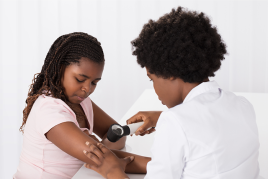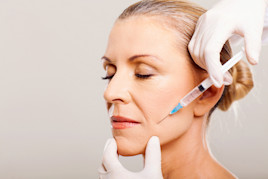How to prevent skin conditions in athletes
How to prevent skin conditions in athletes
Athletes are at an increased risk of skin infections, which can have serious consequences. To help prevent infections, athletes, coaches, and athletic trainers can follow these tips from dermatologists.
Athletes are at an increased risk of skin infections, which can have serious consequences. To help prevent infections, athletes, coaches, and athletic trainers can follow these tips from dermatologists:
Keep cuts and scrapes clean and covered with a bandage until healed. A cut or scrape weakens the skin’s defense and allows germs that cause infections to enter.
Prevent blisters to reduce infections. Apply a pad, gel, or spray to areas that routinely blister. To help prevent blisters on the feet, ankles and hands, consider using specialized gloves and socks or wearing two pairs of socks. Athletes should also make sure that their footwear fits properly.
Wear moisture-wicking clothes. This helps keep the athlete’s skin dry and prevents germs from growing.
Wear sandals in the locker room. Wearing sandals or other shoes helps reduce infections on the feet.
Shower after every practice and game. In addition, athletes should use an antimicrobial soap and wash their entire body.
Do not share personal care items. Athletes should always use a clean towel after showering and use their own towels, soaps, razors and other personal care items.
Wash clothes and towels after each use. Sports bags should also be washed, as germs that cause infections can remain in the bags and grow.
Disinfect equipment, including protective gear, daily. For proper disinfection, follow the manufacturers’ instructions.
Perform regular skin checks. Athletes should check their skin daily, especially those in high-risk sports, such as wrestling. Look for any changes, such as cuts, sores, redness, swelling and pus, and report any changes to an athletic trainer or doctor.
Never use sandpaper or bleach to pass a skin check. This will cause more damage to the skin and keep the athlete on the bench longer.
Without treatment, skin infections can worsen. If you or your athletes notice anything on their skin that itches, burns or is infected, make an appointment to see a board-certified dermatologist or sports medicine doctor.
 Molluscum contagiosum: How to safely treat it
Molluscum contagiosum: How to safely treat it
 Biosimilars: 14 FAQs
Biosimilars: 14 FAQs
 Practice Safe Sun
Practice Safe Sun
 Relieve uncontrollably itchy skin
Relieve uncontrollably itchy skin
 Fade dark spots
Fade dark spots
 Untreatable razor bumps or acne?
Untreatable razor bumps or acne?
 Laser hair removal
Laser hair removal
 Scar treatment
Scar treatment
 Botox
Botox
 Free materials to help raise skin cancer awareness
Free materials to help raise skin cancer awareness
 Dermatologist-approved lesson plans, activities you can use
Dermatologist-approved lesson plans, activities you can use
 Find a Dermatologist
Find a Dermatologist
 What is a dermatologist?
What is a dermatologist?